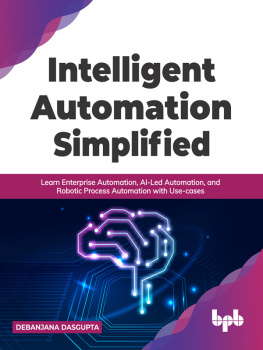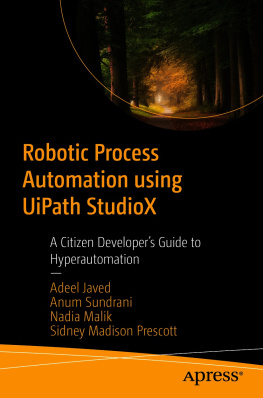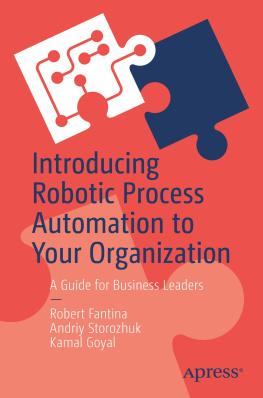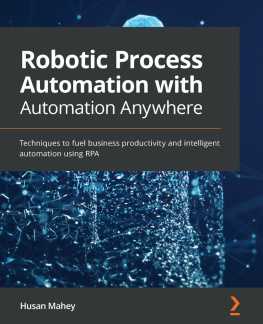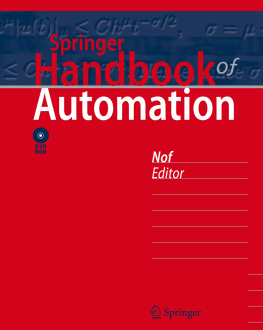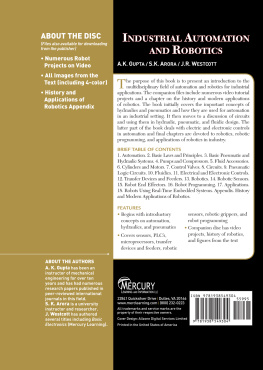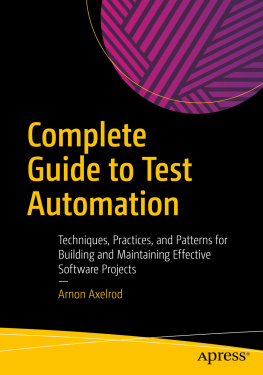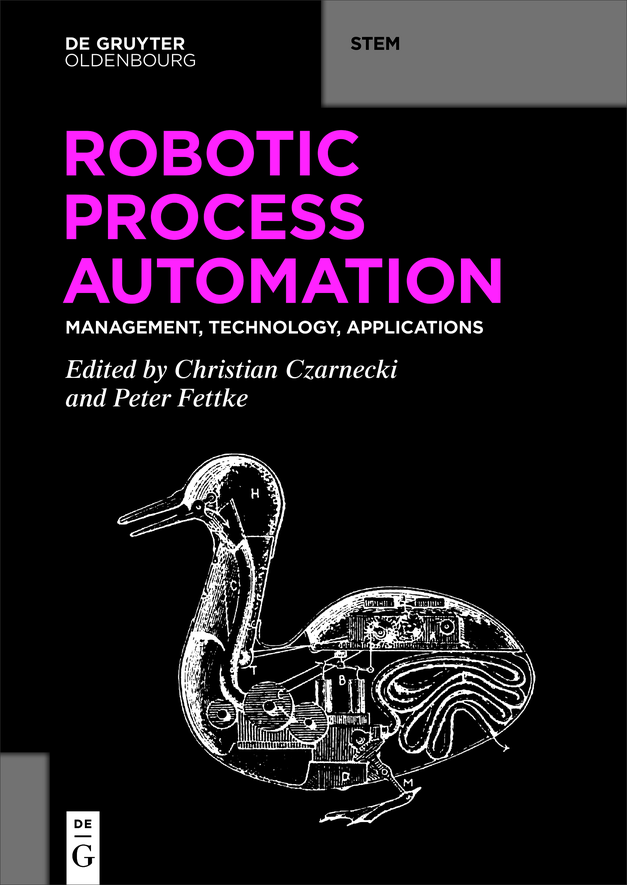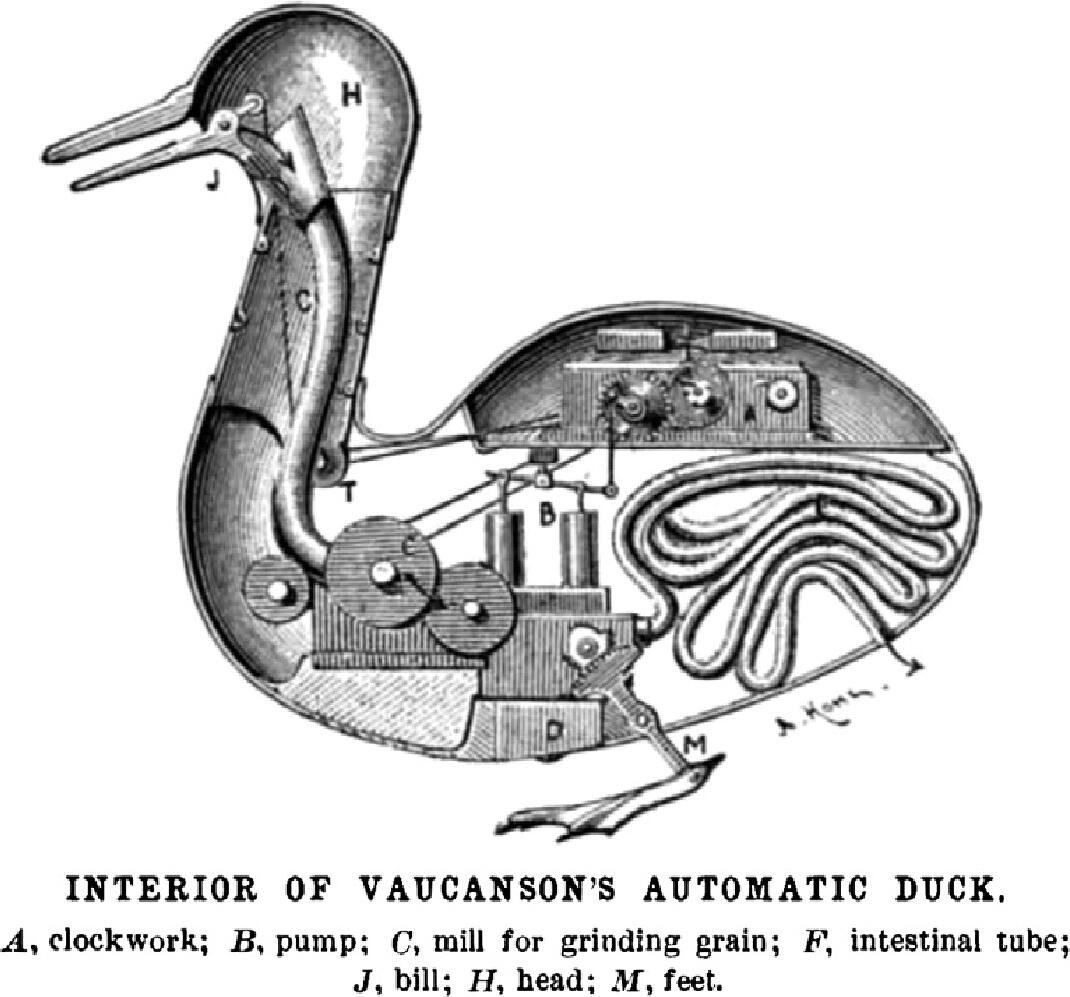Christian Czarnecki - Robotic Process Automation: Management, Technology, Applications
Here you can read online Christian Czarnecki - Robotic Process Automation: Management, Technology, Applications full text of the book (entire story) in english for free. Download pdf and epub, get meaning, cover and reviews about this ebook. City: Oldenburg, year: 2021, publisher: De Gruyter, genre: Computer. Description of the work, (preface) as well as reviews are available. Best literature library LitArk.com created for fans of good reading and offers a wide selection of genres:
Romance novel
Science fiction
Adventure
Detective
Science
History
Home and family
Prose
Art
Politics
Computer
Non-fiction
Religion
Business
Children
Humor
Choose a favorite category and find really read worthwhile books. Enjoy immersion in the world of imagination, feel the emotions of the characters or learn something new for yourself, make an fascinating discovery.

- Book:Robotic Process Automation: Management, Technology, Applications
- Author:
- Publisher:De Gruyter
- Genre:
- Year:2021
- City:Oldenburg
- Rating:4 / 5
- Favourites:Add to favourites
- Your mark:
Robotic Process Automation: Management, Technology, Applications: summary, description and annotation
We offer to read an annotation, description, summary or preface (depends on what the author of the book "Robotic Process Automation: Management, Technology, Applications" wrote himself). If you haven't found the necessary information about the book — write in the comments, we will try to find it.
This book brings together experts from research and practice. It includes the design of innovative Robot Process Automation (RPA) concepts, the discussion of related research fields (e.g., Artificial Intelligence, AI), the evaluation of existing software products, and findings from real-life implementation projects.
Similar to the substitution of physical work in manufacturing (blue collar automation), Robotic Process Automation tries to substitute intellectual work in office and administration processes with software robots (white-collar automation). The starting point for the development of RPA was the observation that - despite the use of process-oriented enterprise systems (such as ERP, CRM and BPM systems) - additional manual activities are still indispensable today. In the RPA approach, these manual activities are learned and automated by software robots, either by defining rules or by observing manual activities.
RPA is related to business process management, machine learning, and artificial intelligence. Tools for RPA originated from dedicated stand-alone software. Today, RPA functionalities are also integrated into elaborated process management suites. From a conceptual perspective, RPA can be structured into input components (sensors in the wide sense), an intelligence center, and output components (actuators in the wide sense). From a strategic perspective, the impact of RPA can be related to the support of existing tasks, the complete substitution of human activities, and the innovation of processes as well as business models.
At present, high expectations are related to the use of RPA in the improvement of software-supported business processes. Manual activities are learned and automated by software robots that interact with existing applications via the presentation layer. In combination with artificial intelligence (AI) as well as innovative interfaces (e. g., voice recognition) RPA creates a novel level of automation for office and administration processes. Its benefit potential reaches a return on investment (ROI) up-to 800% that is documented in various case studies.
Christian Czarnecki: author's other books
Who wrote Robotic Process Automation: Management, Technology, Applications? Find out the surname, the name of the author of the book and a list of all author's works by series.


